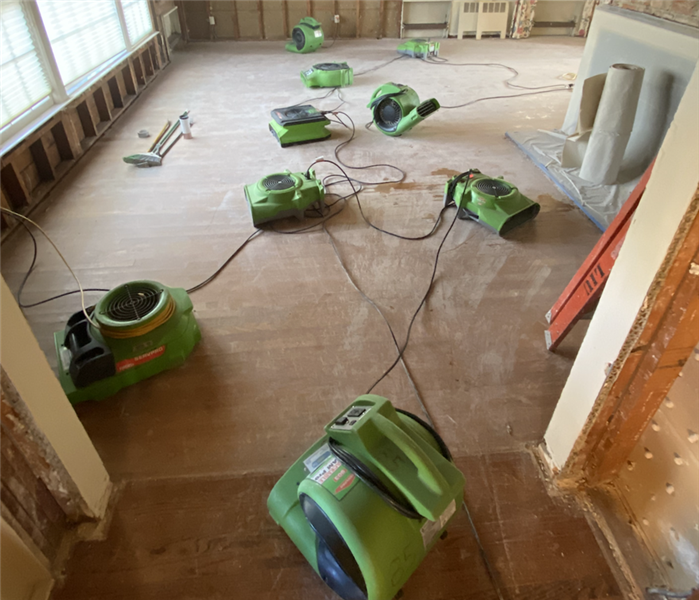Where Does the Water Go?
2/22/2022 (Permalink)
So Where Does the Water Go?
It's a frustrating scenario trying to figure out where the water ends up after a leak occurs. When a leak is discovered from an appliance or an open entryway (window, door, hole), it's crucial to find out proper steps to take.
In the case of multiple-units, like co-ops or apartment buildings, it's even more difficult to deal with. It is necessary to find the travel of water to determine a water restoration solution properly. Multi-unit housing is not an unexpected location for such detective work, as every apartment is typically plumbed separately, yet shares walls, ceilings, and floors with other living spaces. It is inadequate for a landlord to respond only to the complaint of one tenant when it is very likely that the water from the leak eventually spreads throughout the building where you cannot even see it and other tenants have not yet noticed.
Is It Easy to Follow the Spread of Water from Space to Space?
Water is often characterized as moving along the path of least resistance. This fact does not always hold up to scrutiny, as a number of other factors weigh in. For example, if water runs along the outside of a pipe, think condensation on a cold water supply pipe parallel to the floor in a warm, damp basement, some water will drip in a line along the expanse of the pipe to the floor. Instead of just one wet spot below the pipe, there will be many damp areas, tracing on the floor over the length of the pipe. If, on the other hand, the cold pipe is perpendicular to the floor, the condensation will tend to run down that pipe, depositing in a circle around the bottom. Other examples can result in even more varied answers.
So How Do Trained Technicians Follow the Water?
Since water follows pathways not quite as straightforward as folklore might think, SERVPRO must find more reliable ways to discover where water migrates and hides. Our technicians master basic moisture detection strategies during the Institute of Inspection, Cleaning, and Restoration Certification (IICRC) training. We use detectors with and without prongs to locate the presence of moisture, helping us trace the outline of a water incursion. For added data, we also employ special moisture meters to determine levels of water absorbed by permeable materials. The moisture levels become baselines for our Applied Structural Drying (ASD) technicians when we move on to determining drying goals after we remove all standing water.
Why Does It Matter? Shouldn’t the Water Just Dry Up Inside the Building?
One of the concerning factors to consider is the possibility of mold growth if all water is not removed from every space within an apartment building. Mold spores need only a small amount of moisture to “germinate” and begin their growth curve. Only oxygen, water, and an organic surface upon which to multiply are necessities for molds. No light is required so that mold colonies can breed in between walls, above ceilings, and in any building cavity. Because of the potential of mold damage when wood framing, drywall, ceiling tiles, and other building materials are just slightly wet, landlords must find and make arrangements to remove all water after a leak.
How Do Professionals Get Water Out of Confined Spaces?
Portable extractors can be brought far inside the units of even a large apartment building. The mobile units are much more flexible in uses, fitting in tight spaces much easier than the large yet more powerful truck-mounted variety. The equipment can be carried like a backpack, capable of extracting up to 12 gallons of water before needing to be drained to begin a fresh attempt to remove all the water practical. If the extractor cannot reach moisture, even with extenders, we have to consider some controlled removal techniques such as drilling access holes into the drywall.






 24/7 Emergency Service
24/7 Emergency Service
